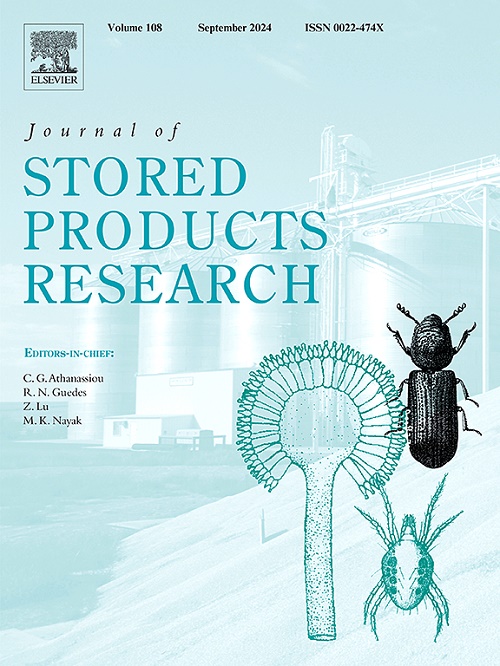Prediction of damage characteristics of apple fruit based on test and finite element method
IF 2.7
2区 农林科学
Q1 ENTOMOLOGY
引用次数: 0
Abstract
Apples are highly nutritious, however, their thin peel and high crispness make them susceptible to various forms of damage during harvesting, transportation, storage, and grading. Mechanical damage significantly impacts both their edibility and commercial value. Therefore, it is crucial to predict and evaluate potential damage in fruit production and logistics. In this study, the effects of compressive damage on apple fruits were investigated. A multi-scale finite element analysis (FEA) model, incorporating both the peel and flesh, was developed to analyze the impact of compression distance and storage time (1, 3, 5 days) on internal stress variations within the fruit. The results indicate that, when compressed at displacements of 2 mm, 4 mm, and 6 mm, the maximum equivalent stress in the flesh and peel reached 0.31, 0.52, 0.68 MPa, and 0.19, 0.30, 0.49 MPa, respectively. The force-displacement curves from both experimental data and finite element method (FEM) simulations for apples stored over different durations showed high correlation coefficients of 0.9911, 0.9931, and 0.9955, respectively, confirming the model's ability to accurately simulate real compression scenarios. The integration of experimental results with finite element methods provides a more comprehensive understanding of the mechanical properties and damage relationships in apples, offering significant insights for predicting internal damage and developing new systems to prevent fruit damage.

求助全文
约1分钟内获得全文
求助全文
来源期刊
CiteScore
5.70
自引率
18.50%
发文量
112
审稿时长
45 days
期刊介绍:
The Journal of Stored Products Research provides an international medium for the publication of both reviews and original results from laboratory and field studies on the preservation and safety of stored products, notably food stocks, covering storage-related problems from the producer through the supply chain to the consumer. Stored products are characterised by having relatively low moisture content and include raw and semi-processed foods, animal feedstuffs, and a range of other durable items, including materials such as clothing or museum artefacts.

 求助内容:
求助内容: 应助结果提醒方式:
应助结果提醒方式:


